
Krampus is a complex figure, a bringer of punishment and a guardian of tradition that helps keep children in line. But at the same time, he’s also a terrifying monster that can whip children.
In one sense, Krampus is the stuff of nightmares: a half-goat half-demon creature that beats the naughty and even takes them away. But Krampus is also a good friend of Santa and is still celebrated in some areas of Germany, Austria, Croatia, Hungary, Northern Italy, and Slovenia.
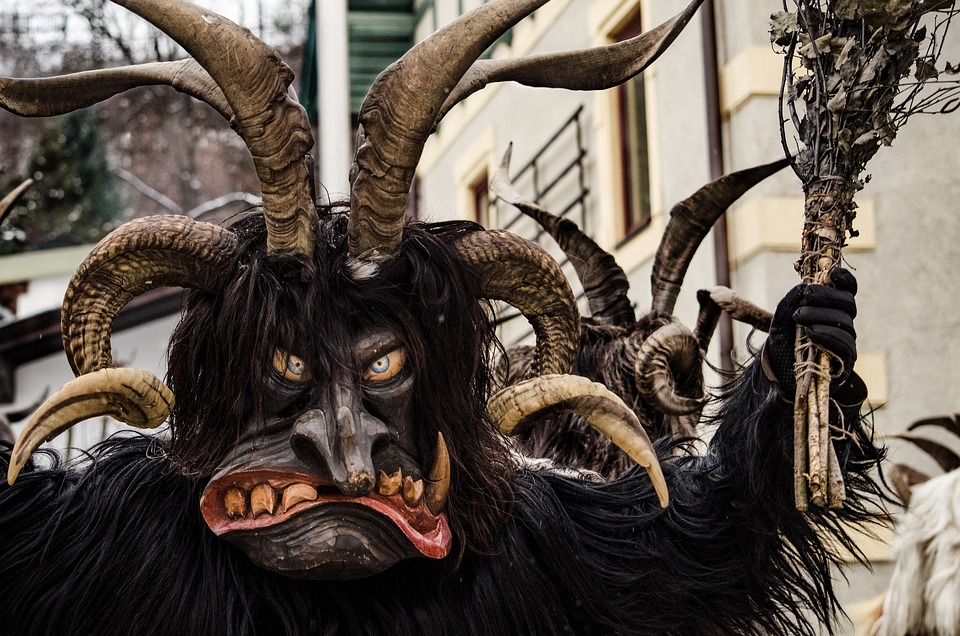
Table of contents
- 1 The Dark Side of Saint Nicholas
- 2 Krampusnacht
- 3 Krampus was banned twice: by the church and by fascists
- 4 Krampus is coming to town
It was hundreds of years ago, maybe before Christianity took over Europe, that the myth of Krampus emerged — after all, many of the Christmas traditions predate Christianity and come from pagan celebrations. No one really knows when and how Krampus was first described, but in recent years, the child-snatching yuletide demon is making a comeback.
It may have begun when Moors were raiding European towns 1,500 years ago, kidnapping locals and selling them into slavery. It may have been brought on by the Vikings, who also did the same thing (though this is likely a modern folklore invention propagated online). At any rate, during the 17th century, Krampus was an old and popular myth in the Alpine parts of Central Europe and seems to be most prevalent in areas influenced by the Holy Roman Empire.
Krampus is a big, black demon (sometimes he is depicted as dark brown). He’s hairy, has the horns of a goat and the hooves to go with it. He has fangs and a long, pointed mouth and carries some chains around — which could be a Christian allusion to a deal with the devil.
But Krampus isn’t a Christian figure so he carries pagan elements: the Ruten, birch branches used to swat naughty children around. In some versions, he also carries a bag to take away the naughty kids.
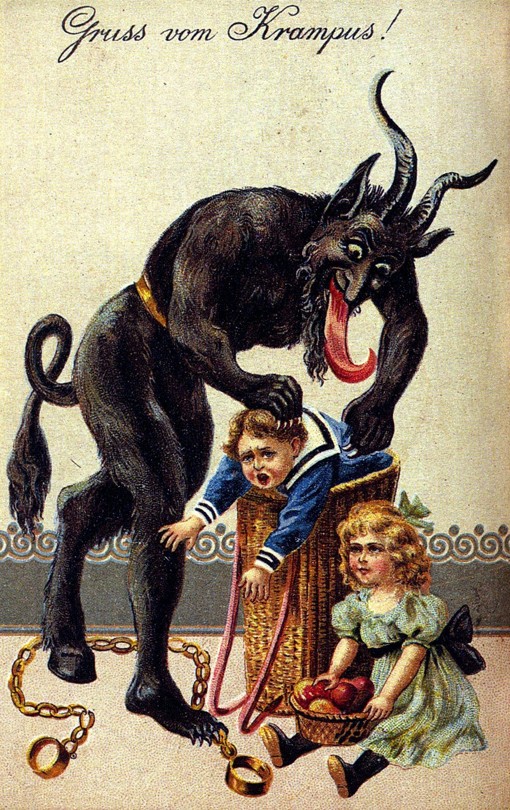
But Krampus doesn’t act alone, and he’s not a strictly evil creature — he may be a fiend but he’s also a friend to the popular figures of the holiday season. Specifically, he’s a friend of Saint Nicholas’, the kind elderly figure who brings children gifts on the 6th of December. In true yuletide fashion though, St. Nicholas only brings gifts to nice children. Those who behave badly may expect a twig or even a piece of coal under their pillows.
A twig or a lump of coal might not scare off naughty children, but the Krampus most definitely would.
Krampus is part of a colorful bunch called the ‘Companions of Saint Nicholas’ which act as a mischievous foil to the saint himself. Aside from the Krampus, there are other mythical companions. In some parts of Germany, there’s Knecht Ruprecht, a bearded man who beats naughty children into being nice, France has the vile child-eating Hans Trapp and Père Fouettard, there’s Schmutzli in Switzerland, while other areas of Germany have Belsnickel, a vagabond that brings sweets to good kids and beats the bad kids — a tradition that was also carried over to the Pennsylvania Dutch areas and the Brazilian-Germany communities.
The Companions of Saint Nicholas are essentially a group of boogeymen. They might be nice to good kids or ignore them, but if you’ve not been nice… you’d best be careful! If you can make it to the 6th of December, you’re good. But the 5th belongs to Krampus and the bunch.
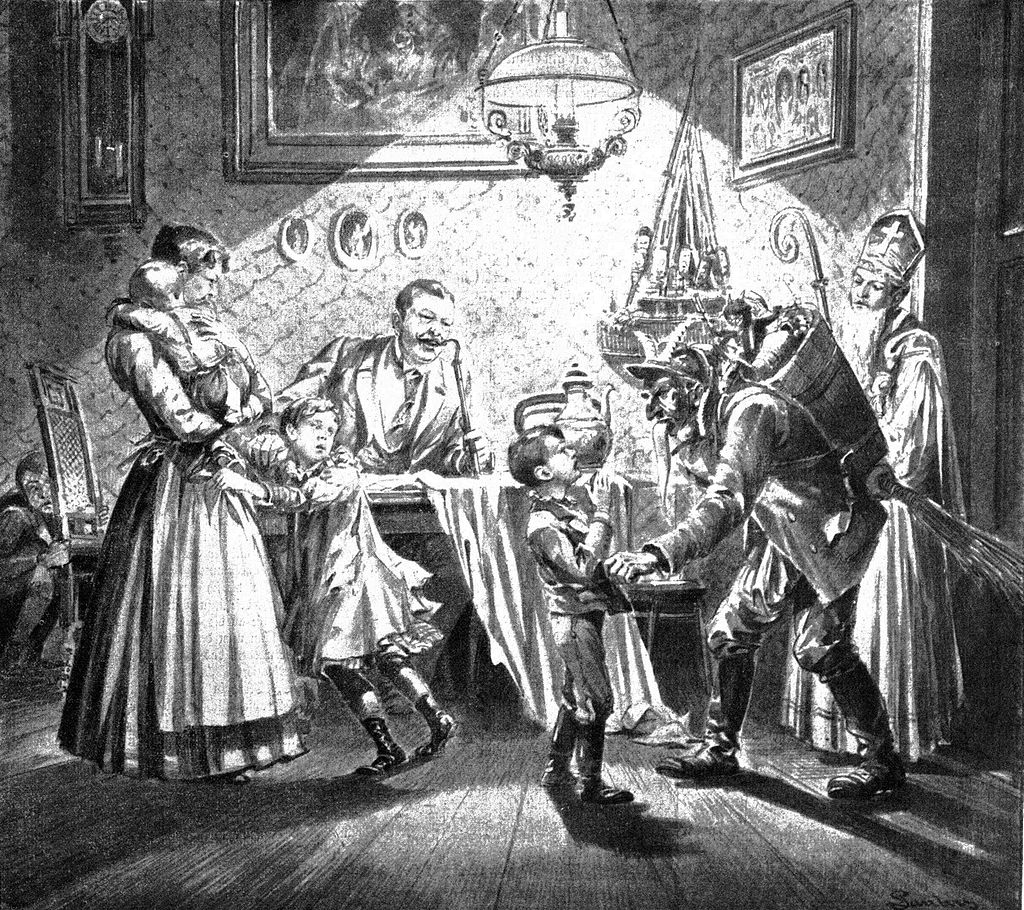
Both Krampus and St. Nicholas have their origins in pagan celebrations of the winter solstice. As was often the case, these celebrations were incorporated into Christianity, but their origin was thrown into oblivion. But we’re seeing a cultural resurgence of non-Christian habits, and a lot of these celebrations have come back in recent years.
For centuries, parents would use Krampus to scare kids into submission. After all, the holiday season wasn’t the cozy gift-filled celebration we have today — it was a period of cold and hardship that needed to be endured until spring. But in the 21st century, Krampusnacht (Krampus night) is a time of celebration of cultural heritage, and a great way to kick off the yuletide.
Krampusnacht celebrations include a Krampuslauf — a “Krampus run”, or rather, a parade. People dress up as the Krampus, scaring spectators and sometimes even chasing them. There’s often alcohol involved and it’s all done in good spirit despite the Krampus’ evil looks (although Austria has had some trouble with marauding Krampuses gone rogue). Local artisans make themed art, and there are stands selling chocolate, figurines, and mulled wine.
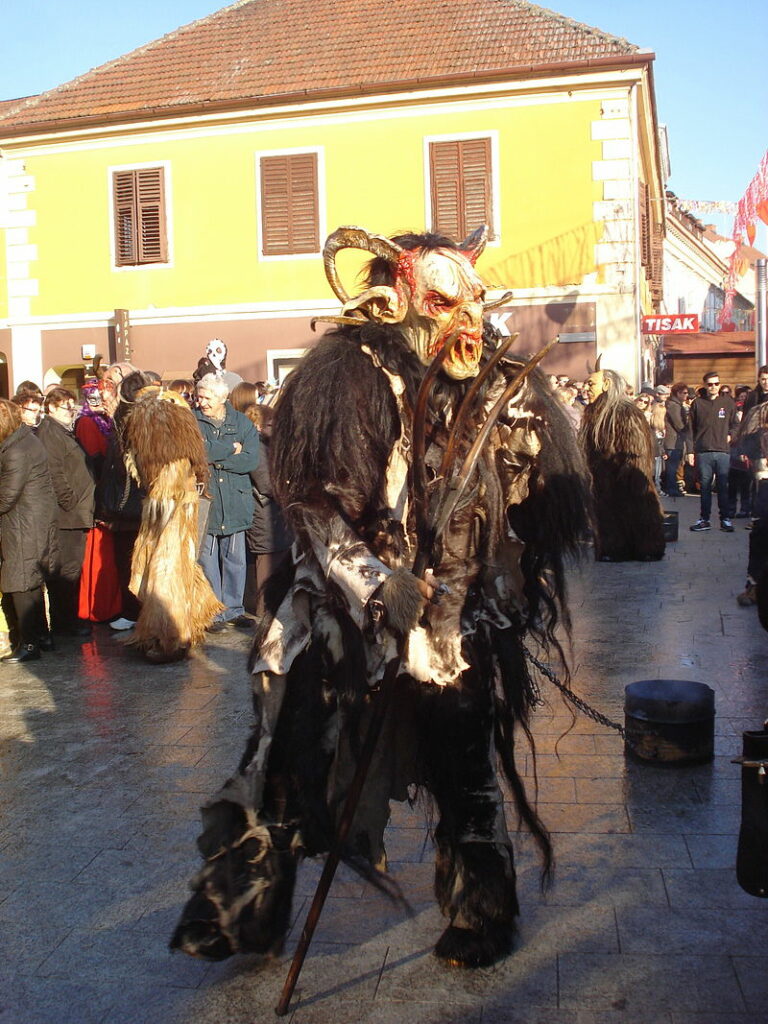
Nevertheless, some municipalities consider the Krampus to be too scary and are banning this type of celebration (unrelated to the pandemic). Particularly for those who are unaware of the celebration, it can be very scary. Even for those who are aware of it it can be a hectic and unpleasant experience. Krampus follows no rules, and a crowd of Krampuses is even worse. Here’s how one tourist in Salzburg, Austria, recalls Krampusnacht:
“The narrow streets in the Old City section of Salzburg were packed with pedestrians as the Krampuses stomped through. Many people were caught unaware and reacted with terror. Some would flee and try to seek refuge in a shop or restaurant, only to be pursued by a determined Krampus. With so many easy targets, we again managed to escape largely unharmed. At times we were chased, jostled and struck, but compared with the brutality we witnessed, it was obvious we had been spared the full brunt of what Krampus could muster.”
Since the re-emergence of Krampus is still a fairly new thing, authorities may try to keep it in check. It’s not news for the demon: he’s already used to people trying to get rid of him.
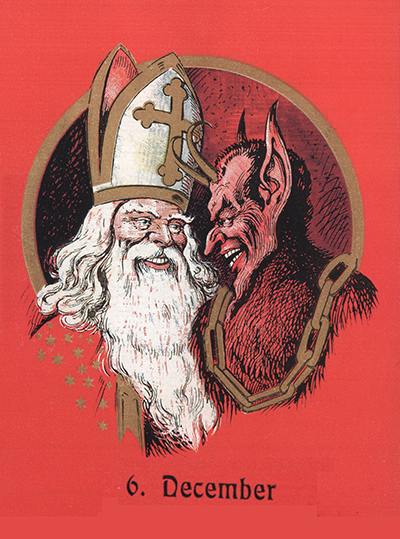
It wasn’t always fun and games for Krampus. He was constantly suppressed by the Catholic Church, which tried to forbid any pagan-related celebrations. What’s interesting is that the Church itself used Krampus or Krampus-like figures in its artistic depictions. In 1975, anthropologist John J. Honigmann wrote:
Understandably, the Church wanted to get rid of Krampus and all pagan devils and has been trying to do so since medieval times. But it wasn’t really successful. The people remembered Krampus, even as its origin story was lost to the shroud of time.
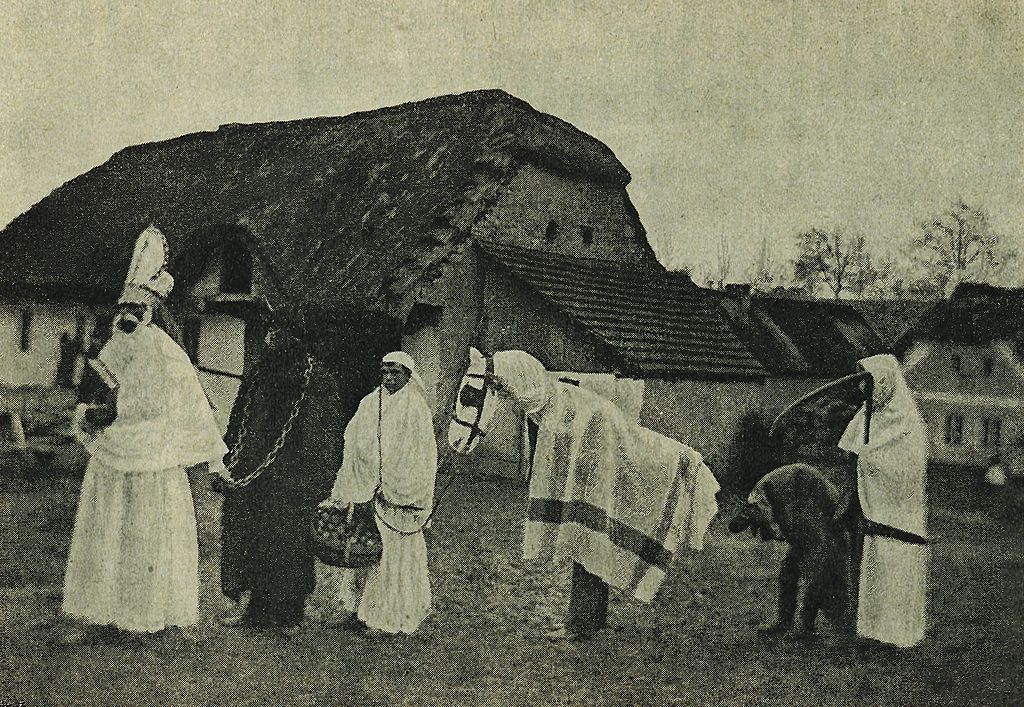
Krampus was also banned by the fascists — specifically, the 1932 far-right Dollfuss regime in Austria, which included the Fatherland’s Front and the Christian Social Party. The two parties tried to suppress any mention of Krampus and they even distributed pamphlets titled “Krampus is an Evil Man”. The fascists considered the Krampus anti-Christian, but also an invention by the Social Democrats that ‘demoralized’ the population.
But it didn’t really work. No national ban was enforced, and yet again, Krampus endured. Remarkably, despite sustained attacks, the tradition endured
Beginning in the late 20th century, amid efforts to preserve cultural heritage, Krampus runs became increasingly popular in Austria and Germany. During this time Krampus began to be celebrated internationally, and the monster’s growing appeal was evidenced by numerous horror films. Some claimed that the expanding popularity of Krampus was a reaction to the commercialization of Christmas.
In the past 20 years, Krampus runs have become more and more popular in some parts of Germany and Austria. But Krampus is also gaining traction in other parts, even where it doesn’t have any cultural heritage, like the UK or the US. Modern media, like some films and computer games, are also using depictions of Krampus.
Some see this as a sort of commercialization of Christmas. People see it as a way to sell costumes and masks, Krampus-shaped chocolates, or other collectibles, it’s almost like a new superhero (or rather, an anti-hero) has entered the money-making stage.
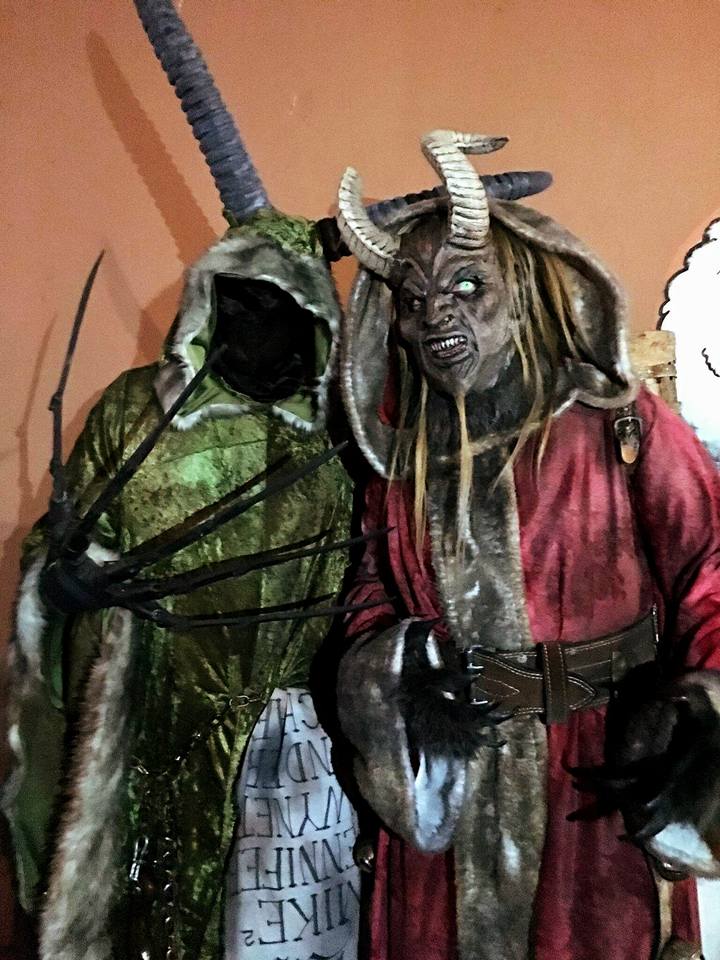
But others see it as a very different thing: a sort of Bah, Humbug reaction to Christmas — a move away from the overly-consumeristic Christmas habits and Christian myth and more into other cultural traditions — exploring the folk origins of the Yule celebration.
Also, we’re becoming increasingly fascinated with ancient culture, so it only makes sense that Krampus is becoming more popular.
As with all aspects of the Christmas celebration, popularity is always going to come with commercialization. Alcohol and rowdy costume parades are always going to be hectic as well. Krampusnacht is not the tamest of celebrations, and it’s not exactly what you’d call nice. But it’s a celebration of ancient culture, and based on what it’s endured so far, it’s probably here to stay.